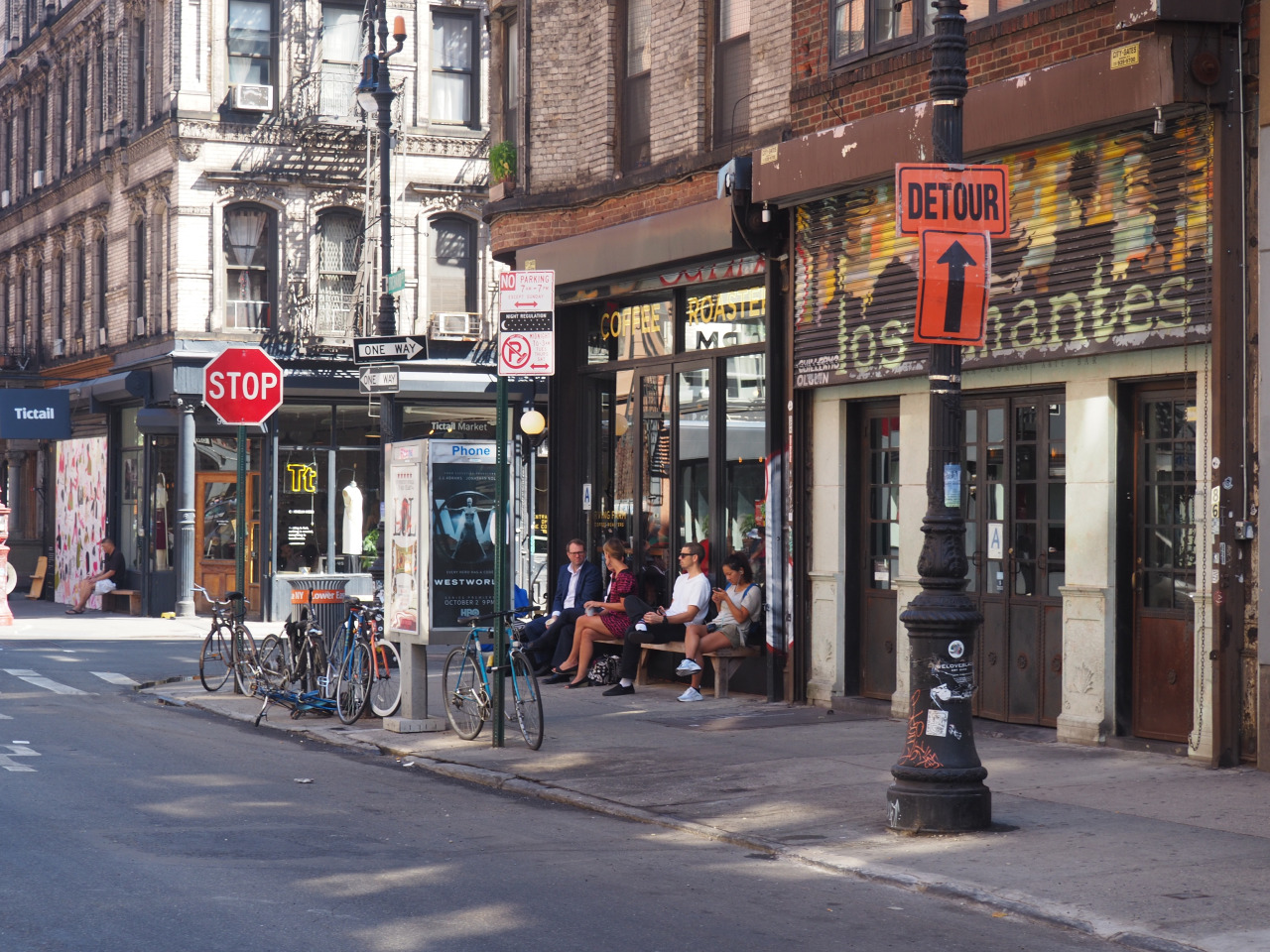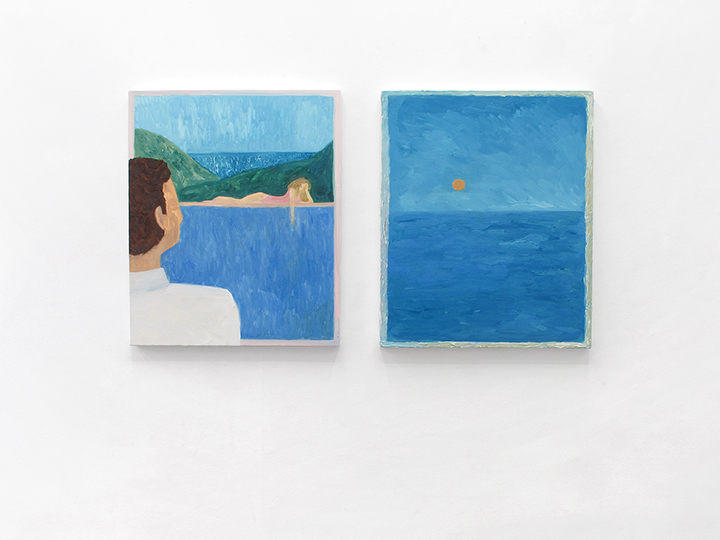Posted on: October 7, 2016
HELLO NEW YORK CITY, WELCOME TO FRAEMd
The Lower East Side; from ‘dingy ghetto’ to little art paradise
We’ve all probably heard of the ‘Lower East Side’ stereo types in New York City. From ‘hole-in-the-wall spaces’ to ‘unknown artists with half-hearted ideas’, but things have changed since and we can now safely say that these labels have been dispelled. How would we know you might ask?Well, we recently paid a visit to the Lower East Side and discovered a little paradise. On our walk around the neighbourhood, we encountered a wide scope of art and galleries that we are very excited to welcome onto our platform!

Orchard Street, Lower East Side, New York City.
Not only is the community of galleries strengthening there, but their art-going audience is also growing. Paying a visit to an exhibition opening after work has become common practice for these vibrant New Yorkers. It’s almost comparable to Amsterdam’s addiction to riding bicycles. The network of galleries continues to grow and it’s slowly turning into the central energy source to spot up-and-coming artists. We spoke to some of the most unique galleries that have helped create the hustle and bustle around the Lower East Side, turning it into the little paradise it is today.
Here’s our intel.
Behind a grungy facade in what used to be called the ‘ghetto’, we encounter the Simon Preston Gallery. They’ve been around since 2008 and present work by both emerging and established international artists. Currently on show is the work of Brazilian artist Jessica Mein – a central video animation and a series of monochrome wall works (collectively known as Desvios – translated from Portuguese meaning ‘diversions’). Artists such as Mein, are an example of the melting pot of cultures and nationalities within the booming hub of the Lower East Side, which for Denny Gallery owner Elizabeth Denny, is the best thing about NYC because it creates diversity and a mix of visiting and local nationalities that support the art scene.
Aside from the endless flow of inspiration circulating around the area, the smaller spaces also have their advantages, not only for the gallerists but also for their artists. A consequence of the demands and pressure placed on them by the art market, this doesn’t stop galleries like Callicoon Fine Arts from being “ambitious in terms of [their] international outreach.” Their artist portfolio crosses many borders; from various ages, countries and even disciplines. The Austrian artist Ullrike Müller, for example, has “a background in sound and performance, but a huge development process finally led her to painting. Her current work addresses the art history of modernism, embodiment and identity which is strongly connected with her prior work.” The more experimentation-friendly spaces downtown are a blessing because being able to keep artists in their stable happiness isn’t a small thing either.
But because the Lower East Side is growing in popularity so is its audience, which is noticeably diverse. “There’s also a strong network of supporters from New York City. A lot of people in movies, design and fashion are interested in connecting with the gallery,” Elizabeth Denny continues. This partly stems from the fact that their gallery represents numerous artists in different disciplines; from sculpture and painting to performance art which gives their gallery the chance to appeal to a wider audience. Take Jessie Edelman as an example, she creates combinations between the traditional landscape and work by great artists from the 19th and 20th century. Her work causes the viewer to “question what’s real or what’s fictional space” and create associations, all of which are true.

Artworks by Jessie Edelman in courtesy of Denny Gallery.
We now see that artists evoke thought and question what we are looking at, but the viewer can do the same. When looking at a piece of art it’s important for our peace of mind to understand what the underlying story is and what better way to gain understanding than to ask and start a conversation. This also applies to buying an artwork. The gallerists of the Lower East Side independently agreed on something; the advice they would give an inexperienced art buyer. Catinca Tabacaru, owner of Catinca Tabacaru Gallery, mentions that “it’s helpful to understand the person behind the art so that when you bring the piece into your home you can also bring in the energy in its entirety.” Sometimes the work can be extremely abstract or labour intensive so it’s interesting to understand what process the artwork has undergone, Justin Orvis Steimer – whose work is now on show – is a key example of this.
Another good reason to pose the questions you have been dying to ask when visiting a gallery is because art is very personal; it makes you feel a certain way, or maybe it makes you feel nothing at all. But when it impresses it resonates with you. Owner of Muriel Guépin Gallery suggests that we shouldn’t “hesitate to ask questions, [they] are here for that and are always eager to communicate why [they] admire the work, so don’t be shy”. Gallerists put a lot of thought into the art that they choose to show. Muriel Guépin explains how “Karen Margolis creates work on paper in a style that is both labour intensive and multi-step. She burns holes into paper, adds water colour and afterwards stitches within the holes or stitches pieces of maps onto the paper, this work is very detailed, like all the work on show, which enhances the necessity to understand and pose questions”.
This also applies to the work of Amy Casey or Thomas Allen, artists represented by Foley Gallery, both of whom help the viewer “embark on a journey of the artists mind,” Michael Foley states. Sometimes art feels far away or scary, especially when it’s an unfamiliar field, “I understand that,” says Sherri Littlefield, “I’m sometimes hesitant to buy an extra espresso shot in my coffee,” she muses. But, if we don’t dare to take the plunge then we will never know what kind of energy boost that art buying can give us.
We were so impressed by the vibrant area and buzzing downtown art community where these six Lower East Side galleries are based and are excited to share them with you.
Text by: May Putman Cramer
Photos: Sandra Lewitz
